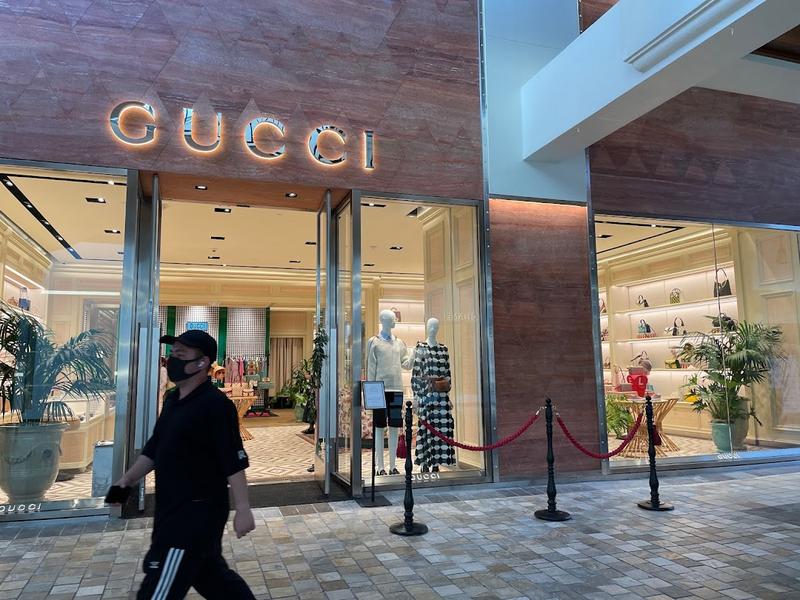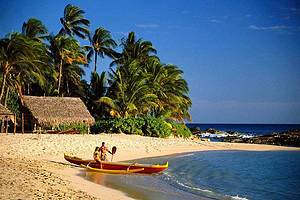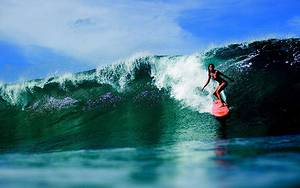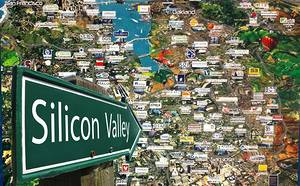Explore Hawaii: The Charm of Island Scenery
6 cities |
14 attraction(s) |
total distance 1073
km
 TIPS
TIPS
Day1
Day2
Day3
Day4
Day5
Day1: Honolulu > Hawaii - Oahu Island (Honolulu)
3 attraction(s) ·
5 km
1
Opulent 19th-century home of Hawaii’s last monarchs operating as a museum with tours & exhibits.
1
km
2
Dedicated in 1883, this famous 18-ft bronze statue depicts the first king of the Hawaiian islands.
5
km
3
Waikiki Beach on the island of Oahu, Hawaii (also known as Honolulu) is a must-visit destination for those on vacation in Hawaii, attracting many tourists. It has a variety of amenities, including numerous hotels and restaurants, and clear waters with moderate waves that are perfect for boating and surfing. The sunset views are also a great spot for photography. Waikiki Beach is a symbol of Hawaii in the minds of tourists.
Day2: Big Island Hawaii > Hawaii - Maui Island
4 attraction(s) ·
323 km
1
Hawaii Volcanoes National Park is located on the island of Hawaii and consists of two active volcanoes, Kīlauea and Mauna Loa, with Kīlauea being one of the most active volcanoes in the world. Visitors can safely observe Kilauea volcano from Kilauea Overlook, as well as other natural landscapes and volcanic features left behind by eruptions. This vast national park compares to a bonfire at any Hawaiian feast, with views of volcanic craters, lava flows, deserts, rainforests, and coastal beaches. The park covers 333,000 acres and stretches from the mountaintop to the sea, featuring 150 miles of hiking trails, scorching deserts, dense rainforests, museums, prehistoric rock art, and volcanic lava tubes. These volcanoes differ from the cone-shaped ones we learned about in school, displaying a "shield" shape, with magma flowing slowly down the slopes. Kīlauea is the only drive-in volcano in the world, producing enough lava daily to cover a 20-mile-long road. Visitors to the volcano park not only witness the spectacular scene of Kilauea's hot magma flowing into the ocean but also visit other attractions, such as Halemaʻumaʻu Crater, Little Kīlauea, and Thurston Lava Tube, to experience the diverse volcanic scenery and spiritual power that Hawaiians believe in, and to have a firsthand encounter with this living museum.
169
km
2
At the end of Hana's island, tourists can enjoy unique black sand beaches. This kind of black sand beach is formed naturally over millions of years by volcanic ash and lava, presenting a mysterious and thrilling beauty. Tourists can bask in the warm sun, feel the charming sea breeze and the charm of nature.
151
km
3
Rainbow Falls, located west of Hilo, is famous for the beautiful rainbow created by sunlight reflecting on the mist of its cascading water. With a height of 24.4 meters, the waterfall falls into a clear pool below. The rising mist is graceful and airy, like a soft veil, creating a stunning rainbow picture with the sunlight. Rainbow Falls never dries up, with a continuous flow of water that eventually merges into Hawaii's longest river, the Wailuku River.
3
km
4
Hilo is a charming place on the big island, which combines a farmers' market, museum, and beautiful art scenery. It is regarded as one of the most culturally rich areas in the United States. However, it should be noted that due to its unique climate conditions, it is also one of the rainiest places in the country.
Day3: Maui > Lahaina
3 attraction(s) ·
82 km
1
Scenic route through lush, tropical rainforest with historic bridges from the early 20th century.
54
km
3
Day4: Honolulu
3 attraction(s) ·
15 km
1
This popular nature preserve on a bay features a beach, green sea turtles, parrotfish & more.
12
km
2
Diamond Head is a dormant volcano located on the southeastern coast of the island of Oahu in the state of Hawaii in the United States. Geologically, it is known as a tuff cone and is believed to be the home of the fire goddess Pele in Hawaiian legend. The mountain was named Diamond Head by 19th-century British sailors who mistook the crystals in the rocks for diamonds. Geologists believe that the volcanic eruption that formed Diamond Head lasted only a few days and was part of the larger Honolulu Volcanic Series. The series of eruptions created many of the iconic landmarks on Oahu today and also drew many tourists from nearby Waikiki. The main trail to climb Diamond Head is a 1.1-kilometer path that takes about an hour and a half to two hours to complete round trip. Local tourist signs remind visitors to watch out for uneven terrain, possible crosswinds, and to bring a flashlight for the tunnels. From the summit, visitors can overlook Waikiki Beach and much of the city of Honolulu, as well as admire the famous sunset views. The fortifications at the entrance to the mountain were first established in 1909 as the earliest military base in the Hawaii area. Today, Diamond Head retains the remains of military facilities such as bunkers and tunnels. As it has become a famous landmark of the Hawaiian Islands, many souvenirs feature the image of Diamond Head. In 1963, the American film "Diamond Head," starring Charlton Heston, was set in Diamond Head. In addition, the popular TV series "Lost" was filmed here in recent years.
3
km
3
Waikiki Beach on the island of Oahu, Hawaii (also known as Honolulu) is a must-visit destination for those on vacation in Hawaii, attracting many tourists. It has a variety of amenities, including numerous hotels and restaurants, and clear waters with moderate waves that are perfect for boating and surfing. The sunset views are also a great spot for photography. Waikiki Beach is a symbol of Hawaii in the minds of tourists.
Day5: Honolulu > Hawaii - Oahu Island (Honolulu)
2 attraction(s) ·
2 km
1
Upscale, four-level shopping mall with department stores, boutiques, a food court & restaurants.
2
km

































